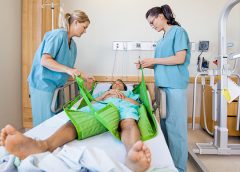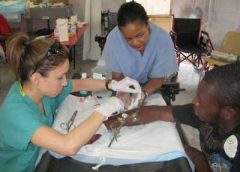Turning programs are essential to prevent and promote healing of pressure ulcers and to prevent the many negative effects of immobility, ranging from constipation to respiratory infections. However, turning a patient often puts a caregiver’s body in an awkward position, which can lead to musculoskeletal damage, especially back injuries.
According to the U.S. Bureau of Labor Statistics, healthcare workers suffer the highest rate of musculoskeletal disorders for all occupational groups and more than seven times the average rate for all occupations. Direct caregivers are the group most likely to experience musculoskeletal injuries. During turning tasks, excessive forces are imposed on the caregiver’s musculoskeletal structure due to the external load of the patient and the caregiver’s form and position during the task. Fragala and Fragala found that turning patients in bed is one of the highest-risk activities that lead to low back pain. (more…)
Read More



